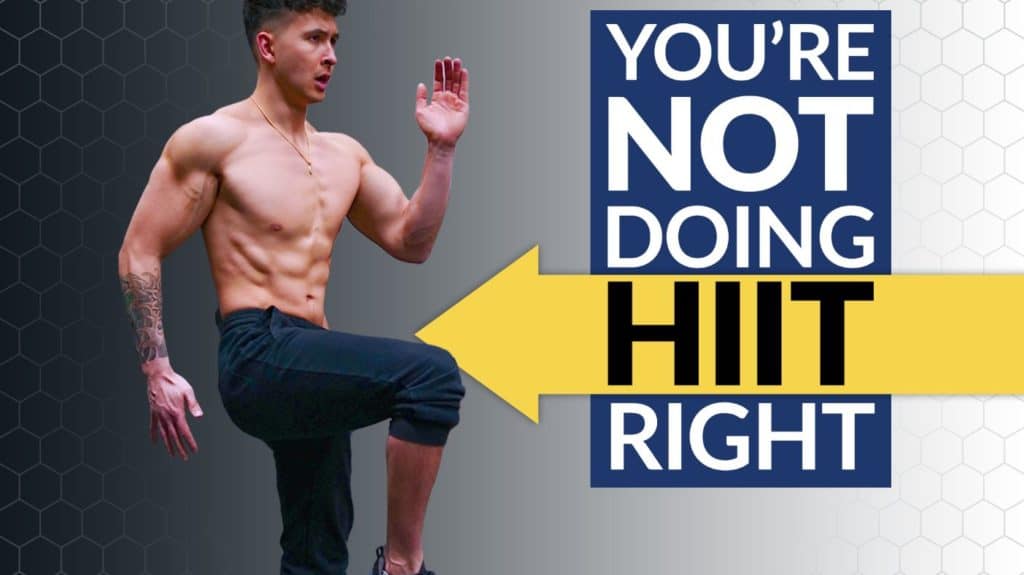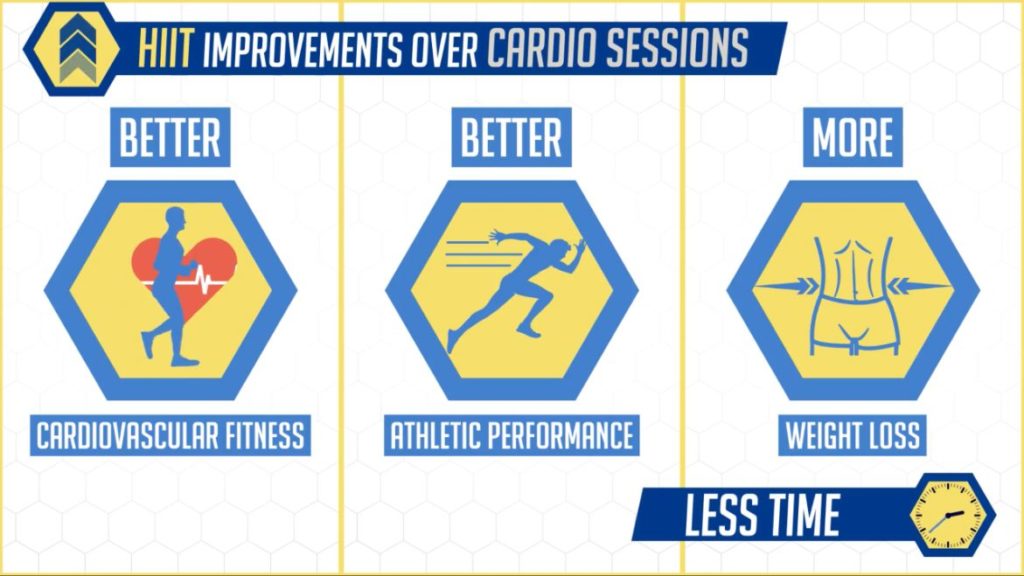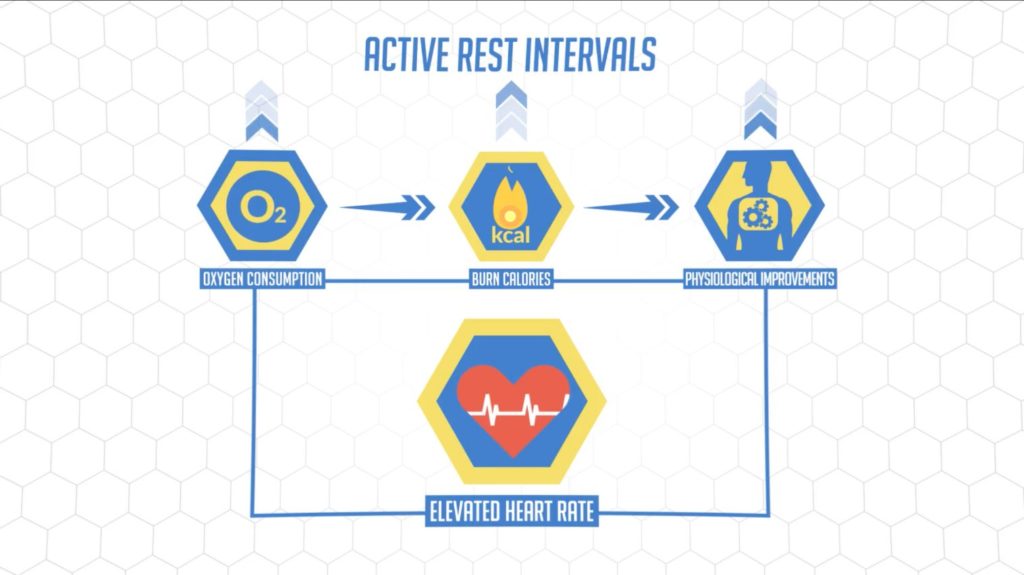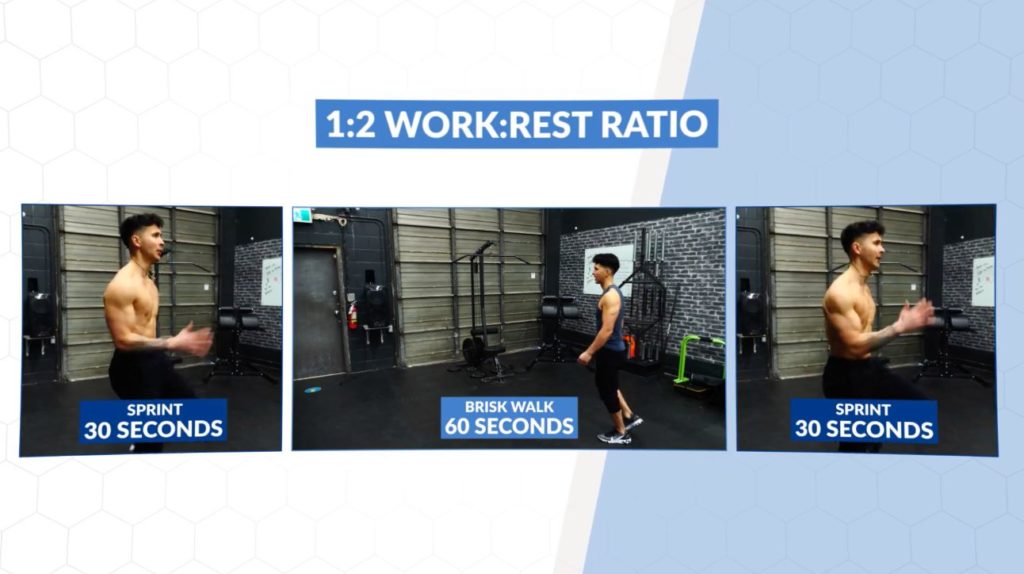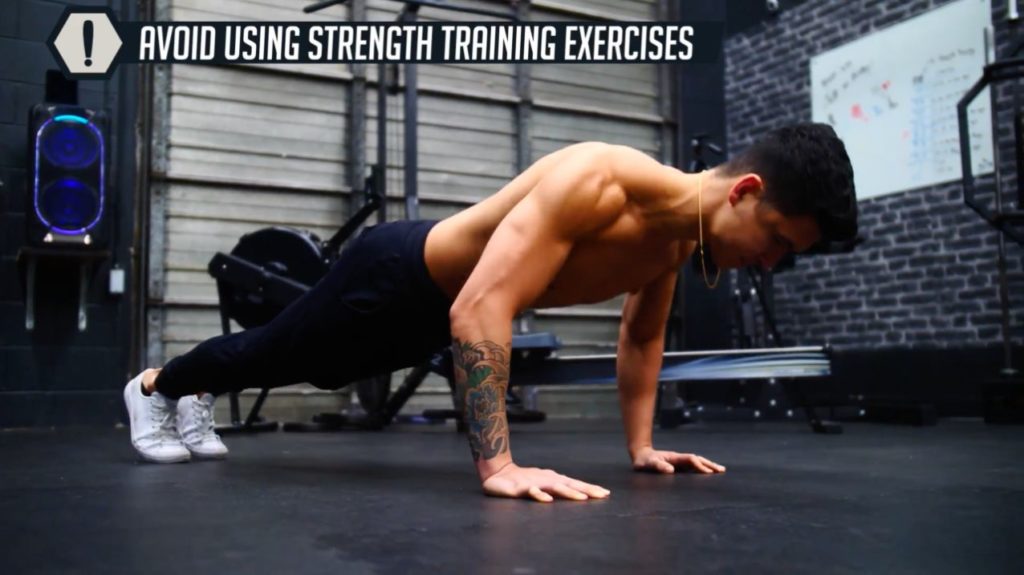The PERFECT 10 Minute HIIT Workout (Gym or Home)
Most HIIT workouts you find on the internet are not true HIIT. That's why, in this article, I'll go through how to properly implement a HIIT workout into your training routine so you reap maximum benefits.
High-intensity interval training, or HIIT, is one of the biggest fitness buzz words that’s come along in the past decade. In fact, 1996 is when HIIT workout became famous in the general fitness world. That was the year researcher Dr. Tabata released a paper describing a new interval training regime that he developed.
It is where you perform several rounds of alternating between short, high-intensity exercise intervals - followed by a brief rest period. He found that this delivered superior results in terms of cardiovascular fitness. And better yet: in far less time than steady-state cardio.
Since then, researchers have found that in most cases HIIT can provide superior, or at least similar improvements in cardiovascular fitness, athletic performance, and weight loss as traditional longer, less intense cardio sessions do. Yet in a fraction of the time (e.g. 13 minutes HIIT vs 40 minutes steady-state cardio).
This is so beneficial because we know that lack of time is one of (if not the most) cited barriers to exercise adherence.
Of course, another barrier to exercise adherence? It's the failure to notice any difference in your physique even after a few months. That's why I've designed every BWS program to be an all-in-one, science-based program that'll help you build muscle and lose fat (i.e. look MUCH better) in the most time-efficient manner. To stop spinning your wheels:
Click the button below to take my analysis quiz to discover the best program for you:
↓
The Problem With Random HIIT Workouts Available On The Internet
The problem now, though, is that this research opened the floodgates to “5-minute workouts” with promises of melted fat. HIIT has since been abused by the industry. And used totally out of context. Most HIIT workouts you’ll find on the internet and probably experimented with are not true HIIT. And, therefore, won’t deliver the unique benefits that HIIT has to offer.
In today’s article, though, I’ll show you how to design a true HIIT workout for you to use. Plus, you don't have to worry about access to equipment. The planned HIIT workouts account for whether you'll be doing them at home with no equipment or at the gym. In addition, I'll go through how to properly implement these HIIT workouts so you maximize your results with the routine.
Maintain A High-Enough Intensity During Your HIIT Workout
Maintaining a high enough intensity and an elevated heart rate is by far the single most important factor there is when performing HIIT. And it’s why most people who are doing what they think is HIIT, aren’t really doing HIIT at all. As emphasized by Dr. Tabata himself in a recent 2019 paper:
“...too much thought is put on the protocol with too little emphasis put on the actual intensity they perform it at.”
To ensure you’re working hard enough, there are two things you want to do here.
Push Hard
First, during your work intervals, push as hard as you can or close to it. Being “tired” just isn’t enough. The goal for each of your work intervals is to get your heart rate to around at least 85% of your max heart rate. So, if you’re 25 years old? This would equate to a heart rate of at least 165 beats per minute.
Don’t have any sort of heart rate monitor? Then a simple test to determine if you’re truly working hard enough is as follows: “if you can say more than a few words without pausing for a breath during or shortly after your work interval, then you’re not working hard enough”.
It’s simple but correlates very well with intensity.
Use Active Rest Intervals
Second, during your rest intervals, keep moving at a moderate intensity. This will help:
- Increase your overall oxygen consumption, ultimately leading to more calories burned and greater physiological improvements AND
- Ensure that your average heart rate remains high enough throughout the whole HIIT session
But, at the same time, don’t overdo it. Some studies even used just plain old brisk walking as the rest period. The key is to keep moving at a pace that will help you recover for your next work interval rather than hinder it.
Use An Appropriate Work:Rest Ratio
There’s no set protocol for HIIT. Nor is there a perfect ratio for your work:rest intervals. There have been numerous studies showing that various intervals can be used to elicit significant physiological changes, as long as the intensity is there. When reviewing the research, it seems as though a 2:1 work:rest ratio is the most time-efficient. That was generally the minimum amount of time subjects needed to sufficiently recover between work intervals.
This could look something like a 30-second sprint with a 15-second brisk walk in between.
But, keep in mind that your current level of fitness will determine what work:rest ratio is most appropriate for you. The only real downside with using longer rest periods is that the workout will take longer to complete. But intensity is what’s most important. So, if you find that you’re way too gassed during your work intervals? Then you’d be better off using a little longer of rest interval or a shorter work interval.
Something like a 1:2 work:rest ratio (e.g. 30 second sprint with 1 minute brisk walk in between) would be a good starting point.
This can eventually be progressed in the following way:
- 1:1 work:rest ratio (e.g. 30 second sprint with 30 second brisk walk in between) THEN
- 2:1 work:rest ratio if appropriate (e.g. 30 second sprint intervals with a 15 second brisk walk in between)
Choose what’s most appropriate for you. And focus more on intensity.
Still struggling to find the appropriate work:rest ratio? Don't worry. Our 3-on-1 coaching program can help. You're going to have a personal coach tagged to you, who'll determine the best working intensity suited to you, your body, and your training goals. Bonus: you'll also have access to a dietitian (who'll customize your nutrition) and me (I'll answer your questions!) Interested?
Click the button below to find out more about the 3-on-1 coaching program:
↓
Pick The Right Exercises For Your HIIT Workout
Alright, we’ve got the intensity and structure of the workout nailed down. It’s time to pick your exercises. You’ll want to use exercises that suit your:
- Level of fitness
- Equipment availability AND
- Do a good job of elevating your heart rate
But again, the intensity is what’s most important. So you have a lot of freedom when it comes to exercise selection.
If you’re at the gym, a simple yet effective option are sprints on an exercise bike. It’s low impact, easy on the joints, and has the lowest risk of injury. But you can essentially use any modality you have available (rowing machine, assault bike, treadmill) and perform your HIIT workout on that. Just be aware that some exercises, like all-out sprints on a treadmill, will cause more stress on your joints. And will have a higher risk of injury. For rest intervals, you would simply perform that exercise at a slower pace.
Pick The Right Bodyweight Exercises, And They Can Be Just As Effective
What about if you’re at home with no equipment? Or, if you just want to switch things up? Then all you need is your bodyweight - as long as you pick the right exercises.
For instance, a study compared the same HIIT protocol on all-out cycle sprints versus burpees. The findings? Researchers found that if participants were able to maintain the same intensities, both exercises were just as effective at inducing physiological benefits. In fact, studies have shown that burpees can produce an average heart rate of 170 BPM, which is similar to what you’d typically get with an all-out sprint.
In addition to burpees (which I know we all love), some other effective bodyweight exercises that have been successfully used in various HIIT studies include:
- Squat jumps
- Jump lunges
- Running in place
- Mountain climbers
- Jump rope
- Star jumps
- Shadowboxing
Use one of these exercises for your work intervals. Or, you could also use a combination of them for some variety. And for your rest periods, slow jogging in place or jumping jacks at a slow pace would work perfectly.
Avoid using strength training exercises like weighted squats or push-ups or abs exercises like sit-ups. Those exercises will be tough to reach your target heart rate safely. And in my opinion, are better off done in a separate strength training workout.
Base The Duration Of Your HIIT Workout On Your Training Goal
Lastly, you need to determine the duration of your HIIT workout. Plus, how many rounds you want to commit to after you’re properly warmed up. And this ultimately depends on your goals and why you’re doing HIIT.
Trying to improve or maintain your cardiovascular fitness? Research has shown that a HIIT workout as short as 8-minutes with a 1:1 work:rest ratio is adequate.
Wanting to burn more calories for fat loss? You’re going to need to work a little longer. That's because HIIT was primarily designed to increase performance rather than shed belly fat by burning a ton of calories.
To put this into perspective, a study that used only squat jumps and a 20-second work to 10 second rest period, found that after a round of 4 minutes of this, female subjects burned an average of 54 calories. If you took a brief rest between each of these 4-minute mini-workouts and accumulated 20 minutes in total, you could expect to burn just over 200 calories (216 calories). And even more depending on your bodyweight.
Similarly, a study on mostly male subjects found similar results. Participants going through a 16 minute HIIT cycling session (1 minute work, 1 minute rest) on average burned 209 calories. The highest numbers I saw in the research ranged from 240 to 360 calories for a 20-minute bodyweight HIIT workout in male subjects.
So, obviously, the range is going to vary depending primarily on your bodyweight. But generally, if you’re doing HIIT to boost your performance, then a shorter 8-minute session will likely do the trick. But if you want to also burn a decent amount of calories to aid in your fat loss efforts, then adding more rounds to get you up to at least 20 minutes would be best.
Example HIIT Workouts
So to put this all together for you, here’s an example 10-minute home HIIT workout and here’s an example cycling workout both using a 1:1 work to rest ratio. Feel free to tweak the work:rest ratio and durations to better suit your fitness levels.
10-Minute Home HIIT Workout
WORK - Burpees: 1 Minute
ACTIVE REST* – 1 Minute
WORK - Mountain climbers: 1 Minute
ACTIVE REST – 1 Minute
WORK - Squat Jumps: 1 Minute
ACTIVE REST – 1 Minute
WORK – Running in place: 1 Minute
ACTIVE REST – 1 Minute
WORK – Jump Rope: 1 Minute
ACTIVE REST – 1 Minute
*Can jog in place or perform light jumping jacks
10-Minute Cycling Workout
WORK – High Intensity Cycling: 1 Minute
ACTIVE REST – Light Cycling: 1 Minute
Repeat x5
As mentioned previously, if you want to just focus on improving your cardiovascular fitness then do 1 round of this. If you want to burn more calories, however, then take a quick break after one round if needed. Then repeat for another round for a total of 20 minutes. Just don’t forget about doing an adequate warm-up and cool down as well.
As for how often to do these HIIT workouts will depend on your goals. Generally, I’d recommend between 1-3 times per week. That's because they are quite intense and will require adequate recovery.
But all in all, I hope you were able to see what a true HIIT workout really entails. And how to structure one based on your needs. Just keep in mind, though, that when it comes to transforming your body, HIIT is just one tool in the toolbox and has its place. But knowing how to also properly incorporate steady-state cardio, weight training sessions, and your nutrition into your overall plan is what’s key to transforming your body as efficiently as possible.
And for a step-by-step program that uses science to guide you every step of the way to a lean, muscular physique then:
Click the button below to take my analysis quiz to discover the best program for you:
↓






